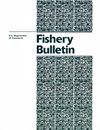空间调查力度减少对白令海东部海底温度指数的影响
IF 0.8
4区 农林科学
Q3 FISHERIES
引用次数: 0
摘要
-每年夏天,美国国家海洋和大气管理局阿拉斯加渔业科学中心在白令海东部大陆架进行海底拖网调查,定期测量海底温度。这些数据被广泛用于生态系统、种群评估和海洋建模。我们评估了备选抽样设计和减少工作量对调查中底温信息质量的影响。就利用调查数据估算海底温度及相关指标的情况,对标准调查中采用的规则网格固定站点的系统抽样进行了简单随机抽样和分层随机抽样的模拟比较。模拟的工作量从全部工作量的34%到100%不等。在模拟调查中,使用3种抽样设计中的每一种,即使只花了一半的努力,也能得到接近真实调查的底温指标值。较低的努力导致各指标的预测误差较大且变量较多。预测性能的下降在34%的努力水平上最为明显。系统抽样的效果略好于简单随机和分层随机抽样。造成这种性能差异的一个原因是,在捕获当前温暖海洋状态的特征小冷池时,随机抽样可能不如标准抽样有效。本文章由计算机程序翻译,如有差异,请以英文原文为准。
Effect of reduction in spatial survey effort on indices of bottom temperature for the eastern Bering Sea
— Bottom temperature is routinely measured as part of the bottom-trawl survey conducted every summer on the continental shelf of the eastern Bering Sea by the NOAA Alaska Fisheries Science Center. These data are widely used in ecosystem, stock assessment, and ocean modeling. We assessed the effect of alternative sampling designs and effort reduction on the quality of bottom-temperature information from the survey. Simple-random and stratified-random sampling were simulated and compared with the systematic sampling of fixed stations in the regular grid used in the standard survey, with respect to the use of survey data in the estimation of bottom temperatures and related indices. The effort simulated ranged from 34% to 100% of the full effort. In the simulated surveys, the use of each of the 3 sampling designs resulted in values of bottom-temperature metrics that are close to those from the real survey, even with as little as half the effort. Lower effort resulted in larger and more variable prediction errors of the indices. The decrease in prediction performance is most noticeable at the 34% effort level. Systematic sampling performed slightly better than simple-random and stratified-random sampling. One reason for this difference in performance is that random sampling may have been less effective than the standard sampling in capturing a small cold pool that is characteristic of the current warm ocean state.
求助全文
通过发布文献求助,成功后即可免费获取论文全文。
去求助
来源期刊

Fishery Bulletin
农林科学-渔业
CiteScore
1.70
自引率
12.50%
发文量
76
审稿时长
>24 weeks
期刊介绍:
The quarterly Fishery Bulletin is one of the oldest and most respected fisheries journals in the world. It has been an official publication of the U.S. Government since 1881, under various titles, and is the U.S. counterpart to other highly regarded governmental fisheries science publications. It publishes original research and interpretative articles in all scientific fields that bear on marine fisheries and marine mammal science.
 求助内容:
求助内容: 应助结果提醒方式:
应助结果提醒方式:


